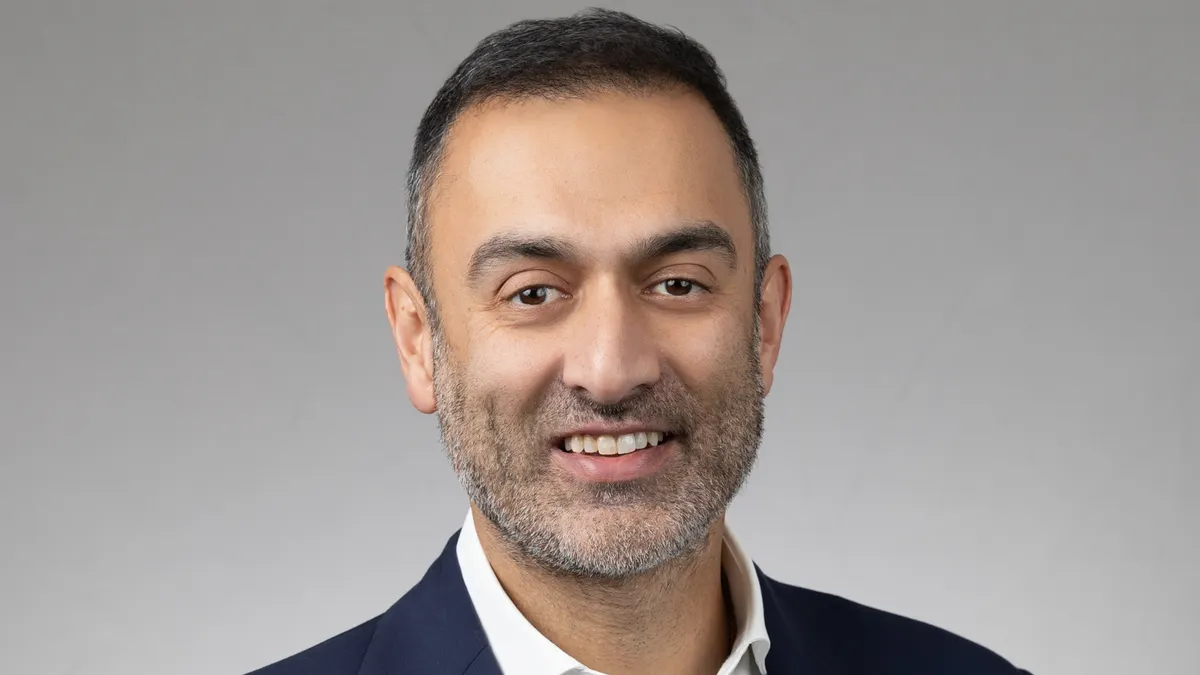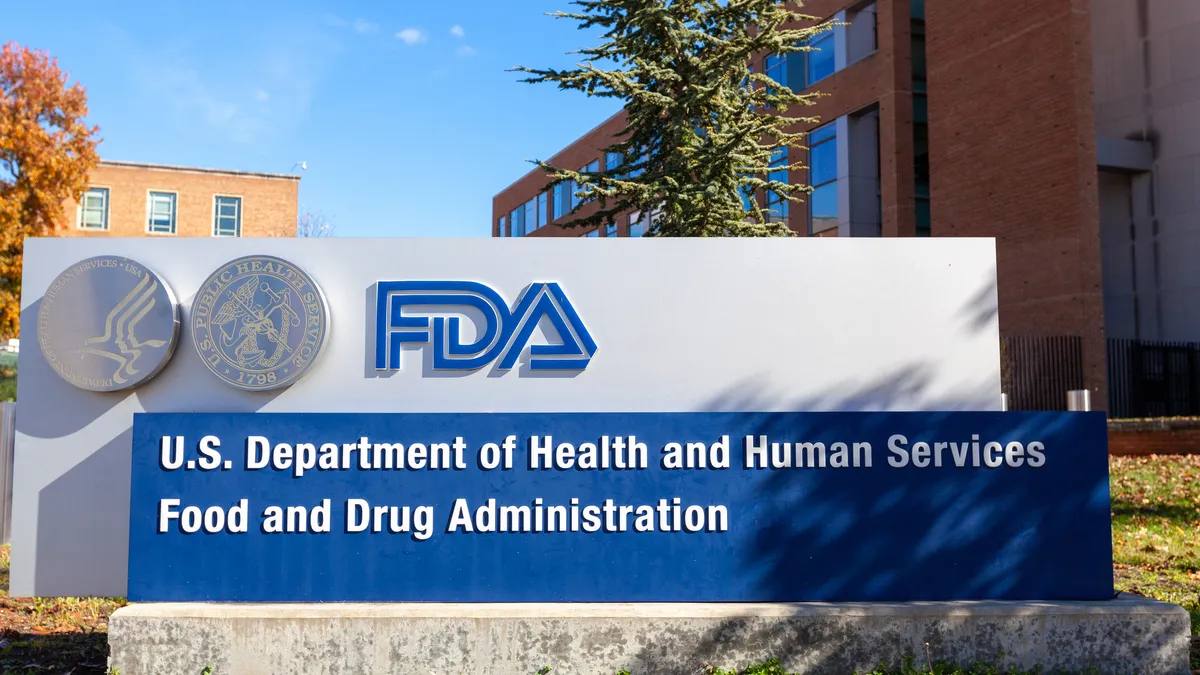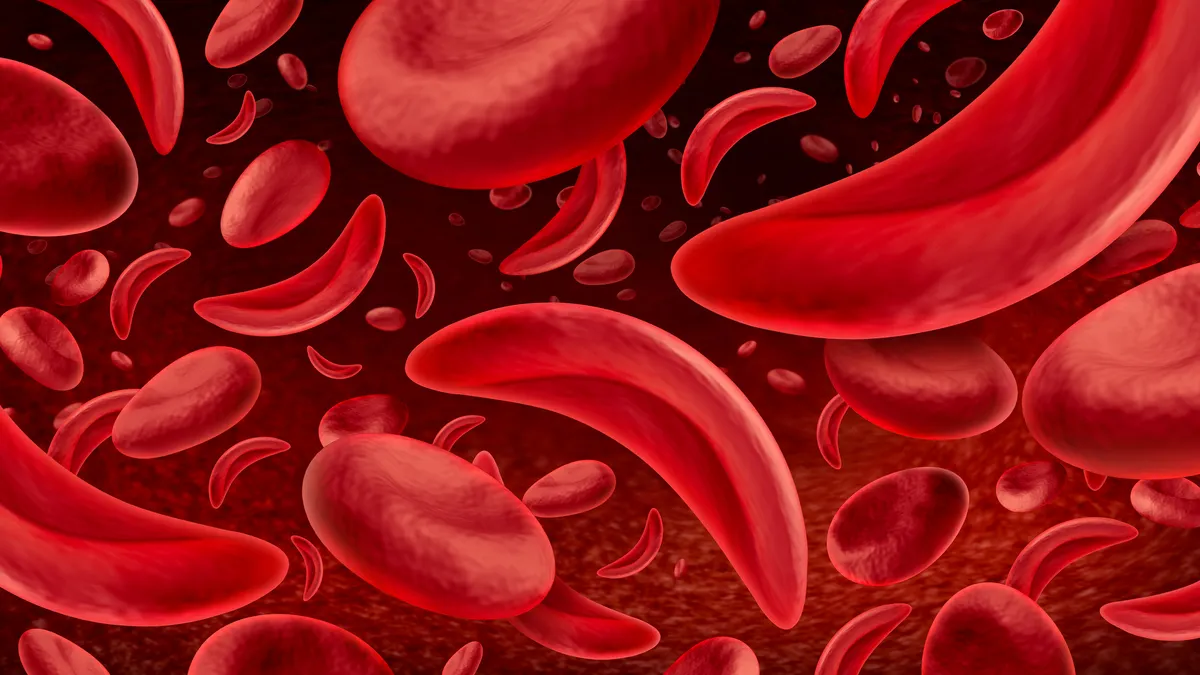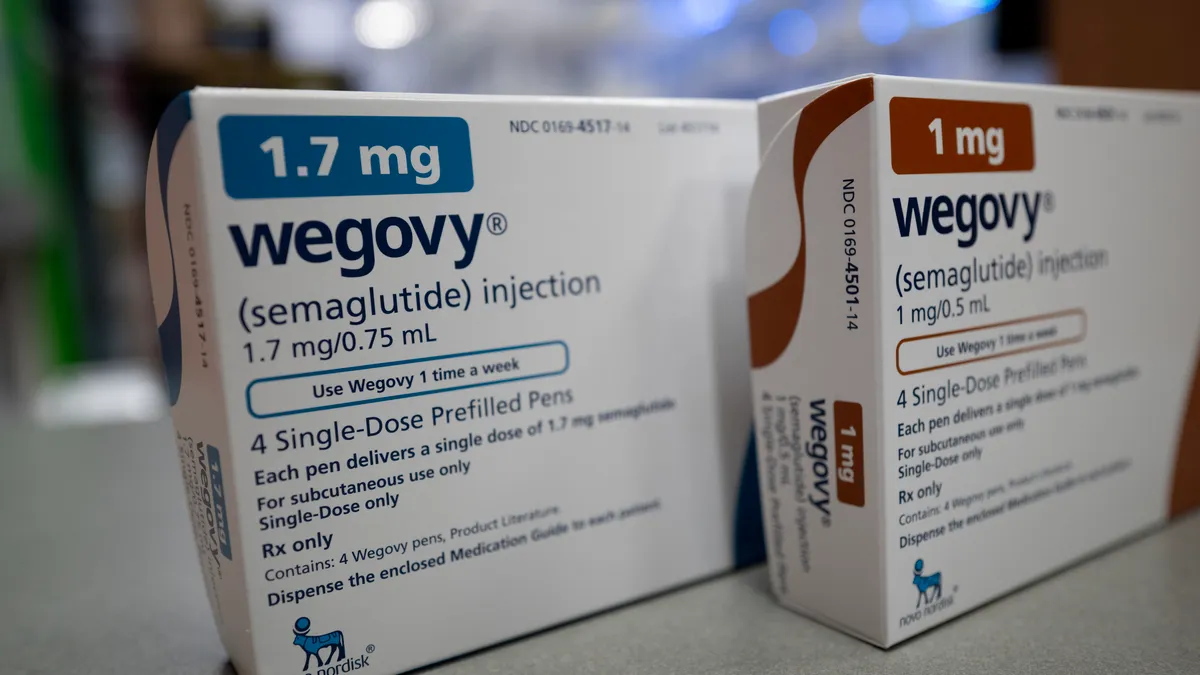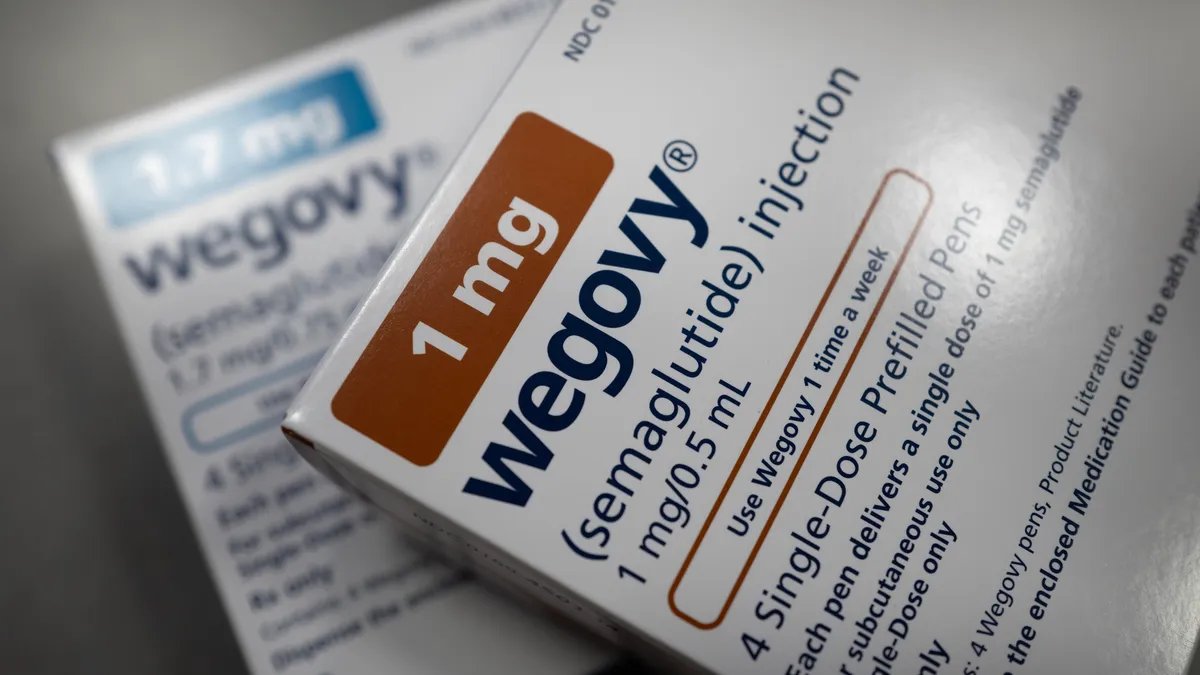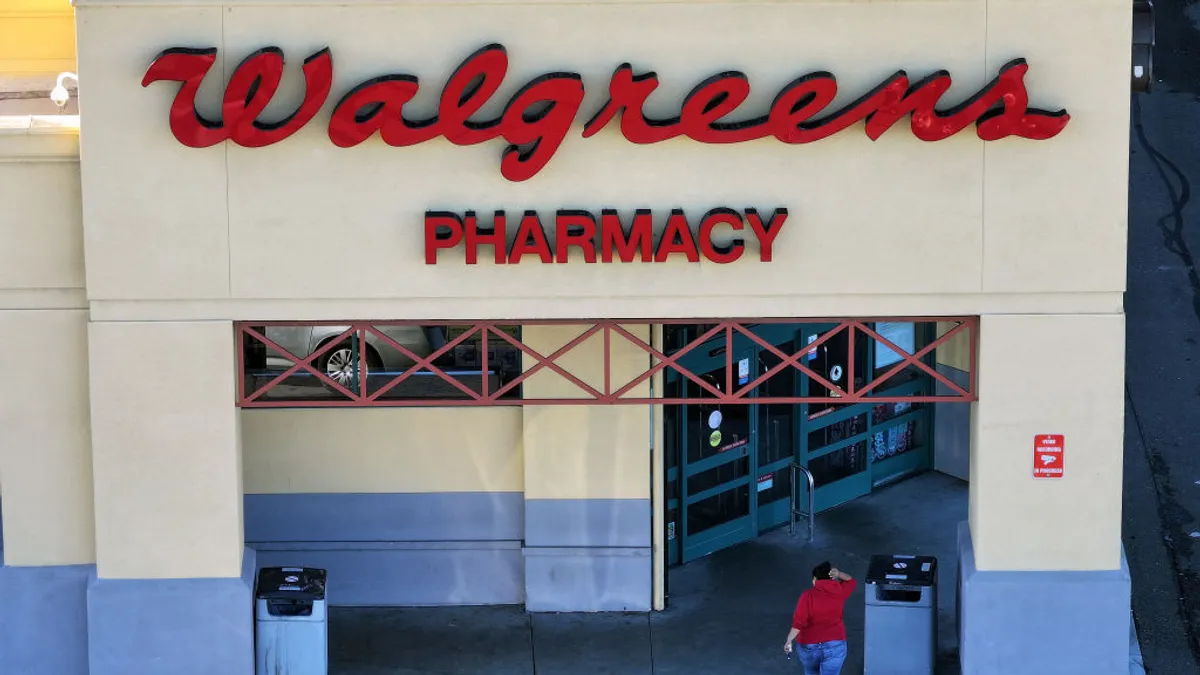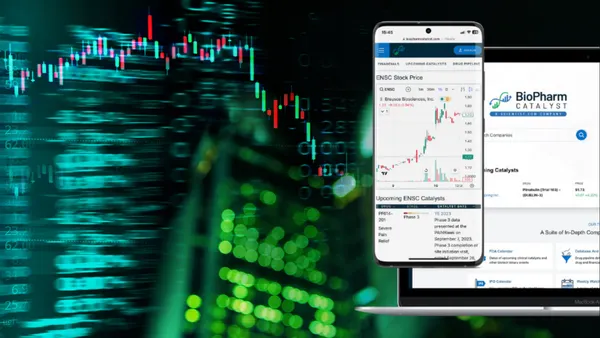Bristol-Myers Squibb & Co's cancer immunotherapy Opdivo gets more investor attention, but sales of the oral anticoagulant Eliquis actually increased faster through the first three quarters of last year — by a hair.
The drugmaker's use of so-called real-world evidence is helping it along.
Developed in partnership with Pfizer Inc. and approved in 2012, Eliquis (apixaban) earned more than $3.5 billion over the nine-month period and is just as critical to the biopharma's future growth as Opdivo (nivolumab).
It's part of a new class of blood thinners that appear close to unseating warfarin — the standard of care for decades.
Direct-acting oral anticoagulants (DOACs) like Eliquis boast effectiveness in reducing blood clots and the risk of stroke. But dethroning the Vitamin K antagonist has been a long-term struggle.
To convince both physicians and payers to switch from the cheaper, more familiar warfarin, Bristol-Myers and Pfizer have built a wide-ranging body of real-world evidence to demonstrate Eliquis' performance in everyday clinical practice.
"We set an ambitious goal to obtain data from approximately one million patients in the real world," said Bristol-Myers CEO Giovanni Carforio at the J.P. Morgan Healthcare Conference earlier this month. "We are well on our way to achieving that objective."
Beating out warfarin
Randomized, placebo-controlled studies remain as important as ever. Even so, drugmakers and payers alike have become increasingly interested in what real-world evidence can reveal about a drug's profile.
Unlike clinical data, real-world evidence is typically gathered from databases of anonymized information showing how drugs are prescribed and used outside of the stringently managed clinical setting. Think medical or pharmacy claims, electronic medical records or non-interventional studies.
Such large data-sets can help complement clinical results and answer questions that pivotal trials weren't designed to address.
"The DOACs are trying to displace a drug [warfarin] that has been on the market for a very long time, has a lot of data and a lot of people have experience with it," explained Bill Dreitlein, director of pharmaceutical policy at the Institute for Clinical and Economic Review, in an interview. "Having that data to help demonstrate the value of this new treatment class is helpful."
For Bristol-Myers and Pfizer, demonstrating Eliquis' value through real-world evidence has had two main components: reinforcing the drug's benefit and demonstrating an economic case for switching from warfarin.
"Real-world data was always part of the plan initially to support what we call the value proposition of the drug," said Christoph Koenen, head of cardiovascular development at Bristol-Myers, in an interview.
An analysis presented at the European Society of Cardiology Congress in August, for example, pooled data from four U.S. insurance databases, comparing Eliquis to warfarin in patients with non-valvular atrial fibrillation.
The study found Eliquis was associated — though not causatively linked — with lower risk of stroke and fewer incidents of major bleeds across a number of high-risk patient groups (such as patients aged 75 or older).
Clinical studies often will exclude patients with certain risks or co-morbidities, which sometimes can make it difficult for physicians to assess how a typical patient with those risk factors would respond to a drug.
Notably, Bristol-Myers' Koenen says it's not just payers that are interested in such real-world data. Physicians and patient advocacy groups also want to see the drug's impact on clinical outcomes, according to Koenen.
"Real-world data was always part of the plan"

Christoph Koenen
Head of cardiovascular development, Bristol-Myers Squibb
On the economic side of the ledger, another analysis published last spring indicated using Eliquis over warfarin saved roughly $250 per patient per month in major bleed-related costs. The higher cost of the branded drug was, in effect, offset by lower medical costs resulting from the reduction in major bleeds compared to warfarin.
Warfarin can cost as little as $4 for a month's supply at the pharmacy, while Eliquis carries a list price of about $419 per month. (List prices, or wholesale acquisition costs, don't reflect any rebates or discounts given by the drug manufacturer, and can differ from a patient's out-of-pocket cost.)
Since Eliquis' approval, the drug has steadily gained share, making inroads against both warfarin and its rival DOAC Xarelto (rivaroxaban). Yet even after half a decade on the market and blockbuster sales for both drugs, warfarin still holds a roughly 45% share of the market. This is both a reason for bullishness — Bristol-Myers' Carforio believes it underscores the drug's growth potential — and a sign of warfarin's staying power.
Real-world potholes
For all the appeal of real-world evidence, such analyses come with very real limitations. Most notably, studies compiling patient information from databases are by their nature retrospective — inviting analytical biases to creep in that wouldn't be an issue in prospective trials.
Real-world data is generally not blinded or placebo-controlled in the standard sense, making it dangerous to draw any conclusions around causation.
Beyond those inherent weaknesses, however, other challenges exist.
"The beauty of real-world evidence, in some respects, is actually its greatest weakness," explains Alastair Macdonald, VP of real-world and late phase at Syneos Health, a pharmaceutical services provider. "It comes from various sources, heterogeneous populations, and it can be varying quality."
For starters, a database is only as good as its inputs.
Pulling medical claims information, for example, on when a patient has a stroke or major bleed depends on how those events were classified by medical staff.
"Particularly relevant to this class [of drugs], if you are talking about [emergency room] admissions, when those get coded the attending physician and people in the ER are not thinking about whether they picked the right ICD-10 code and all the other diagnostic codes underneath it," ICER's Dreitlein said.
Furthermore, medical or pharmacy claims offer no explanations for why a patient might have stopped taking a treatment or for what particular indication a drug is prescribed.
Building generally comparable populations of patients on two different treatments — such as Eliquis and warfarin — can also be difficult when multiple data sources are combined.
To address some of these concerns, Bristol-Myers and Pfizer put a lot of time into matching the definitions and endpoints used in real-world study of Eliquis to those used in the pivotal data set supporting the drug's approval.
Doing so has helped enable the drugmakers to communicate their findings without running afoul of regulatory prohibitions around relaying off-label information.
Cheaper and faster
Even with these hurdles, though, real-world studies are a compelling investment for drugmakers.
Gathering and analyzing data from a wide array of sources does take time and money. Yet, the cost and speed of a real-world study pales in comparison to running another clinical study.
Real-world data, then, can be a good fit for the purposes of alleviating physician or payer concerns around a particular patient population within a drug's approved label.
This is particularly true in cardiovascular disease, where clinical studies often require tens of thousands of patients and are complex in design. (ARISTOTLE, the trial which led to Eliquis' approval, enrolled over 18,000 participants.)
Johnson & Johnson, which markets the oral anticoagulant Xarelto with Bayer AG, has also invested in real-world studies. One, published in 2016, waded through 10 million electronic medical records held by the Department of Defense to find nearly 45,000 patients with non-valvular atrial fibrillation using Xarelto.
For payers, real-world evidence can be appealing as well. Securing coverage still requires clinical proof of whether a drug actually works. But, precisely because of the controlled nature of clinical studies, real-world data can give payers a sense of how a drug might work in more true-to-life settings.
"Payers are demanding that there are real-world evidence packages built both pre- and post-approval to help them in the decision-making process," said Syneos' Macdonald.
Higher usage expected
Real-world evidence, and its potential, has attracted more attention of late. Part of that has to do with a sweeping piece of legislation called the 21st Century Cures Act. Passed by Congress in December 2016, the law directs the Food and Drug Administration to consider real-world evidence as it assesses new indications of already approved drugs.
What that means will take time to play out, but should encourage more drugmakers to consider incorporating real-world data study in their trial programs.
"The FDA will be real drivers over the next two to three years in setting the standards in terms of data moving forward," Macdonald predicted.
Already, the FDA has used in vitro data, combined with real-world safety data, to approve a new indication for Vertex Pharmaceuticals Inc.'s cystic fibrosis drug Kalydeco (lumacaftor/ivacaftor). And Commissioner Scott Gottlieb has spoken publicly in support of real-world evidence use.
"This kind of evidence can make our regulatory obligations better informed about the true benefit-risk profile of a medical product as well as provide earlier identification and a richer understanding of new safety concerns," Gottlieb said during a workshop held at National Academy of Sciences in September.
Bristol-Myers' Koenen believes the first step for the FDA will likely be including real-world data on a drug's label that confirms what was reported in a randomized, controlled study. Further out would be including information about difficult-to-study patient populations gathered through real-world data.










